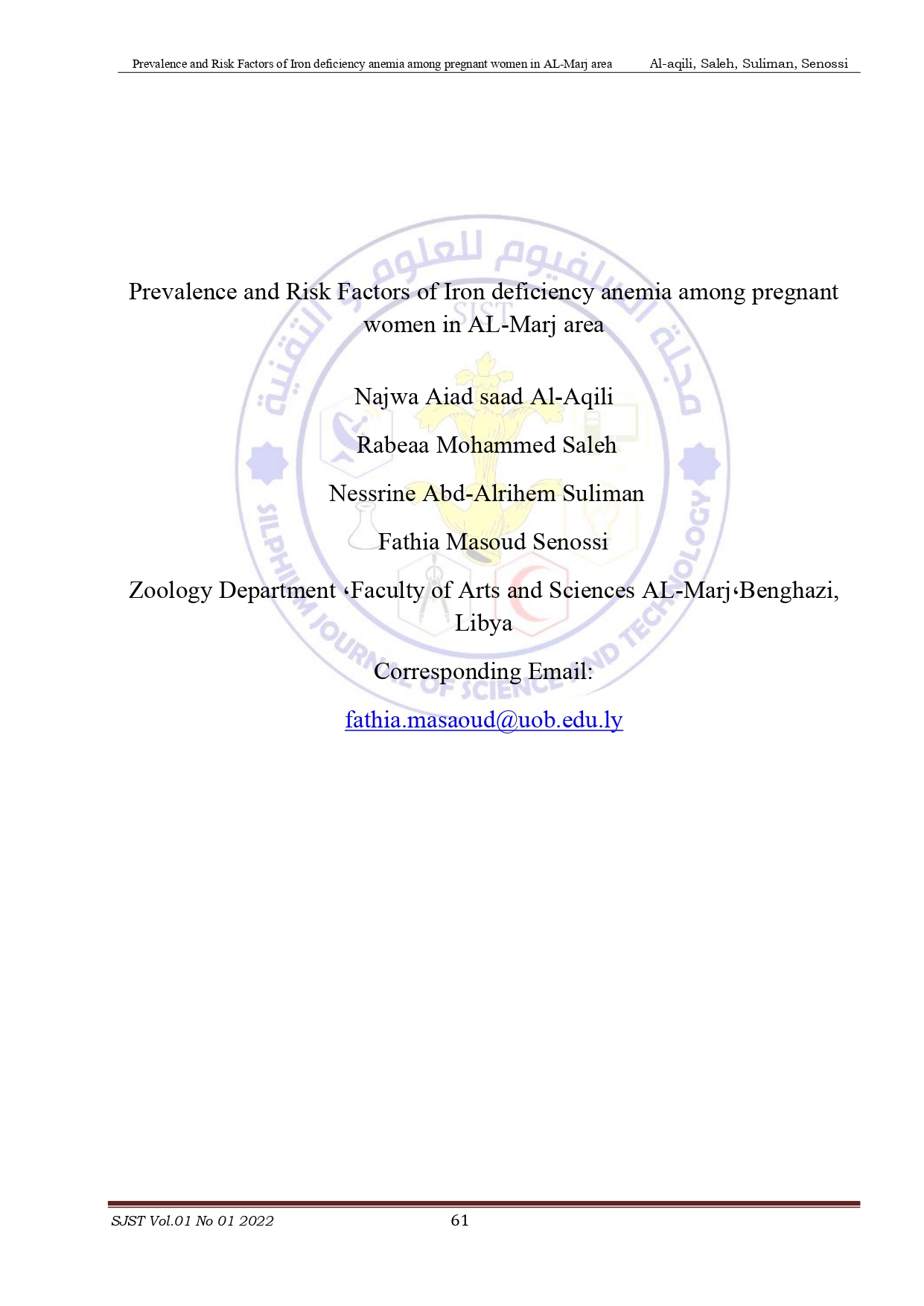Prevalence and Risk Factors of Iron deficiency anemia among pregnant women in AL-Marj area
Keywords:
haemoglobin, serum ferritin, Iron-deficiency anaemia, pregnancyAbstract
Iron deficiency (ID) is the leading single nutrient deficiency in the world. The study was aimed to estimate the prevalence of iron deficiency anemia (IDA) among pregnant women in the Al-Marj area and assessing the knowledge and behaviors of pregnant women in the direction of this disease. The study was conducted between November 14 and December 15, 2017, and the sample consisted of 100 women aged between 19 and 44 years.
The percentage incidence of iron deficiency anemia was 34%. Anemia was more prevalent among pregnant women in the third trimester of pregnancy compared to the second-trimester of pregnancy. The prevalence rate among city inhabitants was higher than that found among village inhabitants. The younger age group (≤24) shows the highest prevalence (50%) among the IDA group. The increase in the number of pregnancies was found to be correlated with IDA.
The study showed an average level of knowledge regarding the IDA definition of anemia. Knowledge of symptoms associated with IDA and the importance of iron supplements was found to be high in both groups. However, weak knowledge of the causes and the impact of IDA on maternal and fetal health and iron-rich food sources was found and absorbed. There were also positive levels of behavior among pregnant women on many related variables that had a clear effect on iron deficiency anemia. With the exception of iron supplementation, it was observed that a large proportion did not regularly take iron supplements.
In conclusion, due to the lack of a strategy for primary health care, which is reflected in the prevalence of IDA among pregnant women in the AL-Marj study community, there is an urgent need for more health education and awareness programs in this regard


